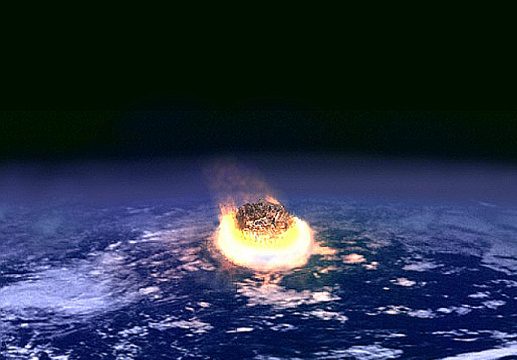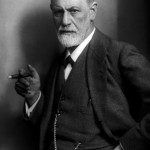
(Wikimedia Commons public domain image)
An article in The New York Times Magazine for 26 April 1981 entitled “Rosetta Stones from Space” opened as follows:
The first recorded meteorite fell in Phrygia in Asia Minor about 2000 B.C. The object was carried to a local temple and then later transported to Rome, where it remained for 500 years before being lost. Almost since the rise of civilization, meteorites have been regarded as objects of worship, and in Asia today a number of meteorites are still kept in shrines. In the New Testament, Acts 19:35 refers to the city of Ephesus and its temple of Artemis containing ”a sacred stone that fell from the sky.” The Kaaba stone in Mecca’s Great Mosque, the holiest shrine in all Islam, is probably a meteorite.
Where exactly these ”falling stones” came from was a subject of debate until the 19th century. As late as 1772, the august French Academy of Sciences, then the undisputed center of European scholarship, issued a report — signed by such notables as Antoine Lavoisier, the father of modern chemistry — flatly stating that ”the falling of stones from the sky is physically impossible.” Instead, the report suggested that meteorites were simply terrestrial rocks ”struck by lightning.”
It was not until 1803 that the respected physicist Jean-Baptiste Biot, also of the French Academy of Sciences, was able, after studying a meteor shower that occurred over the town of Laigle, west of Paris, to certify that these strange objects did not come from earth. It was a finding that marked the beginning of meteoritics as a serious scientific discipline, but the battle was not yet over. Four years later, a meteorite fell to earth near Weston, Conn., and two Yale scholars were dispatched to collect it. Upon hearing of the event, President Thomas Jefferson, a first-rate scientist in his day, is said to have replied that it was easier for him to believe that two Yankee professors would lie than that stones would fall from heaven.
Some have debated whether Mr. Jefferson really ever said such a thing but, regardless of whether he did or did not, the overall point remains: Accepted “scientific theory” was used to deny what eventually could not be denied as true empirical fact.
The relationship between apparent fact and accepted theory is a complex one. Simplistic accounts of that relationship do justice to neither side. Sometimes, apparent fact must be rejected because it contradicts solid theory. The sun, for example, doesn’t really rise in the morning, travel across the sky, and set every evening. Railroad tracks don’t actually converge in the distance. Boats don’t drop off the edge of the earth at the horizon. Shadows don’t move.
Sometimes, though, a solidly established fact mandates the revision of a theory. For instance, the Ptolemaic model of the solar system acquired more and more cycles and epicycles as time passed in order to account for such observed phenomena as the apparent retrograde motions of the planets. And, in some cases at least, the accumulation of such puzzling facts — the famous American historian and philosopher of science Thomas Kuhn (1922-1976) called them “anomalies” in his classic 1962 book The Structure of Scientific Revolutions — eventually lead to what Kuhn called “paradigm shifts,” in which a reigning scientific model is replaced by a new one that, unlike its predecessor, is able to account for those anomalous facts.
Paradigm shifts are not and, of course, should not be undertaken lightly. Many seeming anomalies will turn out to be mistaken or illusory. Many will be able to be incorporated into the reigning paradigm without cataclysmic shifts. But neither should any given paradigm be regarded as permanent or beyond replacement. The mighty edifice of Newtonian physics has been supplanted at very small and very large scales, for example, by quantum physics and relativity. The apparently fixed stability of the continents has been replaced by the concept of plate tectonics. The stability of biological species did not survive its encounter with the data accumulated by Charles Darwin and Alfred Russel Wallace.
I’ve been thinking of such things during my recent readings about apparent extrasensory perception and other seeming psychic phenomena. I’ve had people point out in response to my posts that the current Standard Model of particle physics — the theory that classifies all known elementary particles and that seems to have been experimentally confirmed by the existence of quarks in the 1970s and that gained further credence with proofs of the top quark (1995), the tau neutrino (2000), the Higgs boson (2012), and etc. — allows no room for the existence of “spirits” or “remote viewing” or clairvoyance.
I absolutely agree that the lack of a theoretical framework for conceptualizing “spirits” or ESP is a challenge to those claiming that they exist. But it seems to me that the challenge isn’t a one-way street, any more than Newtonian physics proved the non-existence of anomalies that it couldn’t explain.
A passage from the late Professor Elizabeth Lloyd Mayer’s posthumously-published 2008 book
Chang’s article included an interview with Brian D. Josephson, professor of physics at Cambridge University, who shared the 1973 Nobel Prize in physics for a fundamental discovery in superconductivity. Josephson made no bones about his view that science at large brings a less than open-minded attitude to examining anomalous phenomena: “There’s really strong pressure not to allow these things to be talked about in a positive way.” Chang’s piece in the Times offered the following conclusion: “Perhaps the biggest reason most scientists dismiss paranormal research is that no one has a good suggestion for how the mind could interact with the physical world.” And even Dr. Josephson conceded, “It would have to be something we haven’t identified in physical experiments. I think if we can get some sort of model, then people may start to look at it.” (213-214)
It seems to me completely obvious, though, that facts must ultimately trump theory. Now, it may be that there are no actual psychic phenomena. If it can be established that there are, however, then so much the worse for any theory or model or paradigm that cannot accommodate them. And if — please note my very deliberate use of the important word if — there is as yet no paradigm that can explain them but the fact that they occur can be solidly established, dismissing their occurrence on the basis of merely theoretical objections is not a legitimate move. Nor will it be a successful one in the long run.
Posted from Līhuʻe, Kauaʻi, Hawai’i













